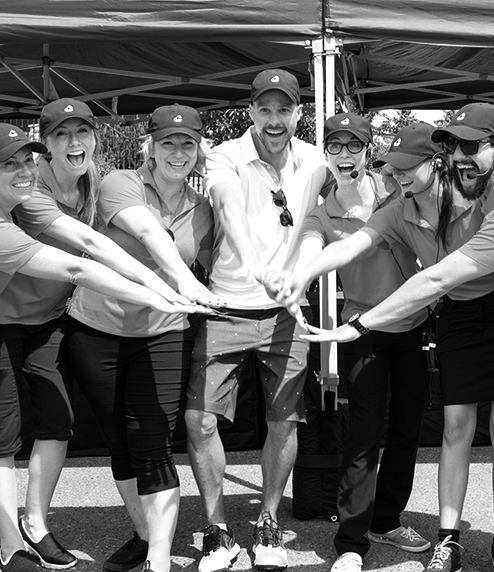As we start to fill up our fresh new planner, it is a great reminder that recognition and appreciation initiatives for employees doesn’t have to happen in the holidays and can happen all year around. Let’s start planning!
Employee appreciation events are a great way to recognize and reward your employees for their hard work and dedication. These events provide an opportunity to boost morale, foster collaboration, and show your team that you value their contributions. In this guide, we will walk you through the steps to plan a successful employee appreciation event.
Note: you can take this event planning guide and checklist and do it yourself, or with our help!
What are the benefits of hosting an employee appreciation event?
Education: Employee appreciation events can be used to educate your team about company updates, new products, or industry trends.
Fostering Collaboration and Connection: They provide a platform for employees to interact with colleagues from different departments, fostering teamwork and a sense of belonging.
Share Product and Service Information: These events can be an excellent opportunity to showcase your products or services to your employees, helping them better understand what your company offers.
Boost Morale: Recognizing and celebrating achievements can boost employee morale, leading to increased job satisfaction and productivity

11 Steps to Plan a Successful Employee Appreciation Event
Step One: Establish Your Goals & Objectives
Establishing clear and well-defined goals and objectives is the foundational step in planning any employee appreciation event. These goals will serve as a roadmap for your planning efforts, ensuring that the event serves its intended purpose and delivers meaningful results. Here’s how to establish your goals and objectives effectively:
- Understand the Purpose: Start by understanding why you want to host an employee appreciation event. Is it to boost morale, enhance team cohesion, celebrate accomplishments, or achieve a specific organizational outcome?
- Make Your Goals SMART: SMART goals are Specific, Measurable, Achievable, Relevant, and Time-bound. Each goal should be clear and precise, so there’s no ambiguity about what you’re trying to achieve. For example, a SMART goal could be: “Increase employee engagement by 20% within the next six months through the appreciation event.”
- Prioritize Objectives: Consider the most critical objectives that align with your organization’s values and mission. Avoid overloading the event with too many objectives, as it can dilute the focus.
- Involve Stakeholders: Consult with key stakeholders, including employees, managers, and HR, to gather input on what objectives would resonate most with the team. Their input can provide valuable insights and ensure alignment across all departments including leadership.
- Align with Company Culture: Ensure that your event goals align with your company’s culture and values. The event should reinforce and reflect the core principles of your organization and current status of the company.
- Flexibility: Be open to adapting your goals if circumstances change or new opportunities arise during the planning process.
- Document Everything: Document your goals and objectives in a formal document. This document will serve as a reference throughout the planning process and will help you stay on track.
By establishing well-defined, SMART goals and objectives for your employee appreciation event, you lay the groundwork for a focused and successful event. These objectives will guide your decisions, budget allocation, and event planning efforts to ensure that you achieve meaningful outcomes and provide a memorable experience for your employees.
Step Two: Define Your Budget
Building an event budget is not a one-time task; it’s a dynamic process that requires ongoing attention and adjustment. Effective budget management requires flexibility, transparency and clear approval process to balance an engaging guest experience and financial sustainability. Here are key expenses to include:
- Venue Rental
- Food & Beverage
- Entertainment/Activities
- Decor/Branding/Signage
- AV/Technical
- Gifts/Prizing
- Transportation
Adjustments might be needed along the way, so keep an eye on the budget throughout the planning process.
Step Three: Assemble the Team
With an employee event from small to large corporations will need buy-in from all departments not only for great attendance, but key internal stakeholders will need to be included in the planning process. Based on your company processes, ensure your event team includes internal resources that can assist in budget development, planning and logistics, execution and reporting.
With the internal team in place, it is time to strategize on your key event vendor or partners. Reach out to your trusted event partners and if this is your first event look to your network and ask for recommendations.
Make sure to establish clear lines of communication and collaboration among team members. Regular team meetings and updates can help ensure everyone is on the same page and working towards the common goal of a successful employee event.
Step Four: Choose an Event Date and Time
Consider the availability and preferences of your employees when selecting a date and time for the event. Participation and engagement is crucial for the success of your event, ensure it doesn’t conflict with other company activities or holidays. Try to avoid busy seasons professionally and personally.
Step Five: Location, Location, Location
In the case where all the employees are coming from a central location select a location is that is easily commuted too (walking distance is great for your budget). We recommend doing a site visit before choosing a venue and take these elements into considerations capacity, floor plan, ambiance/atmosphere, amenities (catering, existing AV infrastructure, seating, and venue polices/restrictions.
Step Six: Logistical Plan
Creating and managing key planning documents including a production schedule and show flow will allow you to plan and execute all the event logistics effectively. Share these planning documents with your event team to ensure each vendor is aligned with the services provided, timelines and onsite execution.
Step Seven: Plan Team-Building Activities
Step Eight: Promote the Event to Employees
Create a comprehensive marketing plan to inform employees about the event. Use various communication channels like email, posters, company intranet, and word of mouth to build excitement and anticipation.
Step Nine: Execute the Event
Ensure all logistics are in place on the day of the event. Have a dedicated team or point person responsible for coordination and troubleshooting.
Step Ten: Post Event Activities
Gather Attendee Feedback: Collect feedback from attendees to gauge the success of the event and identify areas for improvement. Use surveys, comment cards, or interviews to gather feedback.
Step Eleven. Evaluate Event Performance KPIs
Measure the event’s success against the goals and objectives you established earlier. Analyze key performance indicators (KPIs) to assess its impact, such as employee satisfaction, participation rates, and any specific objectives you set.
By following these steps and continuously refining your approach based on feedback and evaluation, you can plan and execute successful employee appreciation events that benefit both your employees and your organization.

Event Planning Checklist
- Define event goals and objectives
- Set a budget
- Choose a suitable venue
- Select a date and time
- Communications plan
- Secure entertainment &/or team building activity
- Plan logistics (catering, audiovisual, etc.)
- Create a registration process
- Promote the event
- Monitor registrations and ticket sales
- Execute the event smoothly
- Gather feedback for future improvements

FAQS:
1.Why are employee appreciation events important?
Employee appreciation events boost morale by recognizing and celebrating the hard work and contributions of individuals and teams, foster better relationships, increase employee engagement, improve retention rates, and acknowledge achievements.
2. What are some ideas for team building activities at employee appreciation events?
Trivia or Quiz Competitions:
Create a fun quiz related to the company, its history, or team members’ achievements.
Board Games or Card Games:
Set up game stations with board games or card games for employees to enjoy during the event.
Scavenger Hunt:
Organize a scavenger hunt with clues related to company history, values, or team members. This is a great opportunity to get outdoors too.
Photo Booth:
Set up a photo booth with props where employees can take fun pictures to remember the event.
Talent Show or Karaoke:
Allow employees to showcase their talents or enjoy a karaoke session for some light-hearted entertainment.
Interactive Workshops:
Conduct workshops on stress relief, mindfulness, or other topics that contribute to personal and professional development.
Customized Bingo:
Create a bingo game with company-related achievements or fun facts about team members.
Remember to tailor the games to the preferences and comfort levels of your team, ensuring that they contribute to a positive and enjoyable atmosphere during the employee appreciation event.
Reach out to us for more creative ideas and how we can elevate your employee recognition event.


